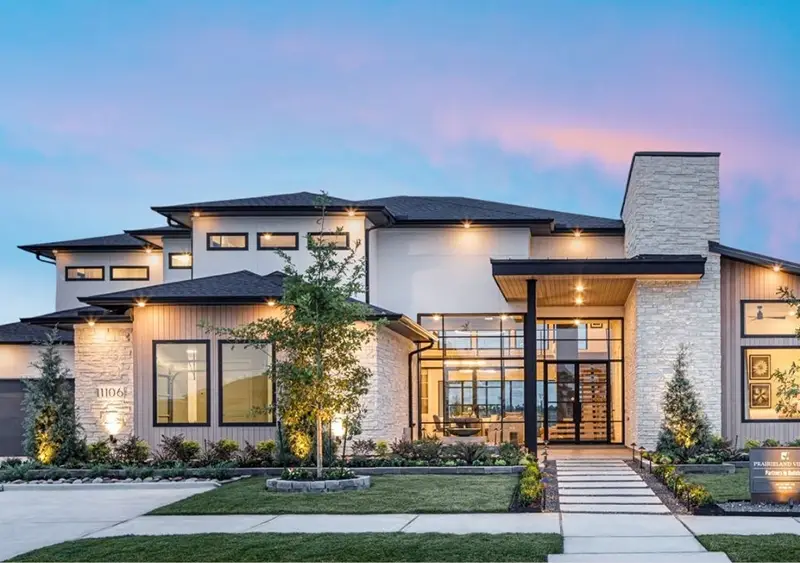Why 3D Rendering Matters in Modern Home Design
Render first. Build better.

5 MIN READ
June 5, 2025

Written By
Rahimudeen M
Minimalist interiors, clean architectural lines, natural lighting that shifts through the day these aren’t things you can convey with a basic floor plan. And yet, most projects still begin with documents that leave too much to interpretation.
For clients, that leads to second-guessing. For designers and builders, it leads to revisions, delays, and misalignment. The real issue? There’s often no shared visual language early in the process.
That’s exactly what 3D Home rendering solves . In this guide, we’ll walk through how it supports better planning, smoother approvals, and stronger creative outcomes for modern home projects.
What You Can Render in a Modern Home Project?
Not every home needs a full architectural animation. But every modern home benefits from at least one kind of 3D visualization because the design choices today are too detailed, too layered, and too personal to be left to guesswork.
Exterior Renders That Set the Tone
Not every home starts with a floor plan, some begin with a feeling. Exterior renders help establish that vision from the outside in. They showcase materials, proportions, landscaping, and lighting in a way that drawings simply can’t.
For architects and developers, these visuals make it easier to pitch the idea. For clients, they remove the guesswork. And for builders, they help avoid costly misalignment on the very first impression of the property.
Interior Renders That Guide Every Choice
Interior spaces in modern homes are highly intentional. Furniture layout, texture combinations, color palettes, and how one room connects to the next every decision is interconnected.
With interior renders, clients can explore those layers visually. They can see how natural light behaves throughout the day, how materials reflect or absorb it, and how their design preferences come to life across different rooms. It turns abstract ideas into clear, actionable visuals,as explored in this piece on how 3D rendering elevates interior design storytelling.
Virtual Walkthroughs That Feel Like Reality
Sometimes, a still image isn’t enough. Clients want to experience the space, not just look at it. Walkthroughs give them that immersive experience.
These animated or interactive tours simulate real-life movement through the home. They help clients feel the scale, flow, and mood of the space before it exists. It’s especially powerful for remote clients, high-end builds, or design presentations that require a strong emotional connection.
Real-Life Applications That Make a Difference
Approvals Before a Single Brick Is Laid
The earlier you visualize, the fewer surprises you face later. For many modern home projects, 3D renders are used in the pre-construction phase to get client approval on designs, layouts, materials, and even lighting choices. It helps align expectations before budgets are locked and timelines begin.
Instead of long back-and-forths over vague references, clients can approve or suggest changes with full clarity. It saves time and builds trust, both of which are critical during the early stages.
Pre-Sale Marketing for Under-Construction Homes
When homes are still being built, visuals often make or break the sale. Renders allow developers and real estate agents to market properties while they’re still in progress often months before completion.
With high-quality exterior and interior renders, buyers don’t have to guess what the final product will look like. They can see it in full detail and imagine themselves living in it. For real estate, that’s a serious advantage.
Material and Style Decisions Without Regret
Paint colors, tile textures, countertop finishes once these decisions are implemented, they’re hard to undo. That’s why interior designers are increasingly using rendering as a tool to test options in a realistic context before committing.
It gives clients the chance to experiment safely. Swap materials. Compare lighting moods. Change a piece of furniture. And see exactly how the room will respond: no guesswork, no regret.
Do You Need Expensive Software? Not Always.
A common myth is that great rendering requires massive software investments or in-house teams running high-powered machines. The reality? You don’t need to buy anything to get professional visuals, you just need a team that knows how to deliver them.
Most architectural rendering firms including companies like Zealous already work with tools like 3ds Max, V-Ray, Lumion, Blender, and Unreal Engine. That means you don’t have to worry about learning software or managing files. You bring your vision, and the studio brings it to life.
Depending on your project, you might receive static images, animations, 360-degree views, or even interactive walkthroughs all formatted to match your workflow and presentation needs.
Why More Builders and Designers Are Outsourcing Rendering?
Creating high-quality renders takes time, skill, and technical precision. For many builders and interior designers, it doesn’t make sense to build that capability in-house especially when timelines are tight and design changes happen often.
Outsourcing solves that problem. It gives teams access to professional-level visuals without adding overhead. Instead of investing in software, hardware, or training, you can work with experienced rendering partners who already have everything in place.
More importantly, the best studios don’t just deliver renders. They act like creative collaborators. They understand how to interpret sketches, mood boards, and architectural drawings. They know how to match your visual style and adapt quickly when plans shift.
That’s why so many professionals are turning to 3D house rendering services as a trusted solution. For busy teams, outsourcing isn’t just about saving time. It’s about getting consistent, reliable, high-quality visuals that support the project at every stage from concept to presentation.
Final Thoughts
Design choices carry weight especially in modern homes where every line, finish, and layout reflects a vision. The earlier those ideas are visualized, the smoother the process becomes for everyone involved.
Good rendering doesn’t just make a space look beautiful. It brings clarity to every conversation. It helps clients commit with confidence, and gives designers room to explore without risk.
When planning meets precision, projects move faster. Clients stay aligned. And the end result feels intentional from the ground up.
At Zealous, we help you build that clarity. Our 3D renders for modern homes are crafted to reflect your design vision with depth, detail, and realism so your project starts strong and finishes even stronger.
About the writer :
Rahimudeen M is the Senior Operations Manager at Zealous Services, with over 17 years of experience in project ... management and client success. He ensures smooth operations across 3D visualization, animation, and modeling projects. A natural leader, Rahimudeen is passionate about building high-performing teams and delivering top-tier results for clients across global markets.
Read MoreFrequently Asked Questions (FAQ)
How early should I use 3D rendering in a home project?
Ideally, 3D rendering should be introduced during the planning stage before construction begins. It helps align design choices, get faster approvals, and reduce costly revisions later on.
Can I request changes after seeing a render?
Absolutely. One of the biggest advantages of rendering is the ability to explore options. You can test different materials, layouts, or lighting setups and finalize what works best before anything is built.
What files or inputs do I need to start a rendering?
You can begin with architectural drawings, rough floor plans, mood boards, or even sketches. A good rendering team will take those inputs and translate them into visuals that reflect your intended design.
Do I need any special software to view the renders?
No. Most studios deliver renders as high-resolution images, videos, or interactive links that you can easily view on your computer or mobile device. There’s no need to install anything.
How long does it take to get a render done?
Turnaround depends on the project size and level of detail. For a single room or exterior view, it may take 2 to 4 days. Larger walkthroughs or full-home renders can take a bit longer, especially if revisions are involved.